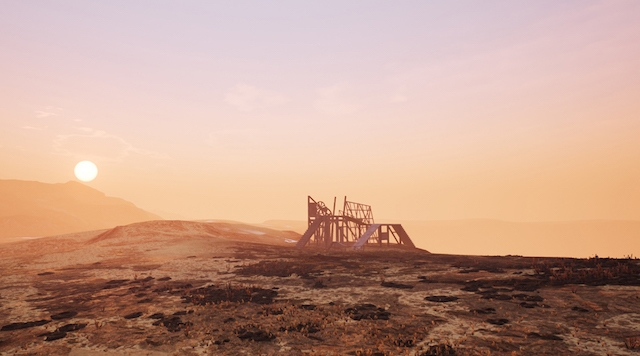3412 Kafka takes its title from an asteroid discovered, in 1983, by US astronomers Randolph Kirk and Donald Rudy; they named it after Franz Kafka, a writer so famous that he has his own adjective – Kafkaesque, used outside of literature to indicate phenomena ranging from the complex to the uncanny to the bizarre. The asteroid, which became known to the Rome-born Bonfili while researching the Prague-born author, was used as the inspiration for two workshops for local schoolchildren she conducted with educator Irene Bianchetti in the peripheral Roman quarter of Quarticciolo in 2015 and at Smart in 2017.
Drawings made by the attendees of these workshops are shown looped on two projectors (Stellario #1, 2015, and Stellario #2, 2017) in one of Smart’s three rooms, alongside a looped video displayed on a tablet, itself entitled 3412 Kafka (2015). The latter work documents the culmination of the Quarticciolo workshop, in which the names of imaginary planets conceived by the workshop participants were signalled in Morse code using automated spotlights positioned in two adjacent apartment blocks, beaming from top to bottom of their facades. As the buildings thus appeared to converse with space, the Morse code performance conveyed the boundlessness of the human imagination and its capacity to transform worldly materials into something like heavenly bodies.
In a separate room, six sculptural landscapes are displayed. Five of them, modestly scaled and placed on plinths, evoke scale models of alien landscapes. The pieces, again titled simply 3412 Kafka (2017), were made of resin mixed with marble, pigments and salt, and thermoformed using industrial processes used to mould plastic; they convey crude architectural features, evoking the dens of humanoid creatures. Much like Kafka’s own works, they rely on the audience’s innate ability to relate a scenario to their own experience and imaginative capacities. A sixth, rather larger work (3412 Kafka, 2017), made of wood and cement , has a more terrestrial feel, being based on the artist’s personal language derived both from memory and her imagination (as stated in an interview featured in the exhibition catalogue). Bombed-out or ruined warehouse-scale buildings, which appear postindustrial, are depicted almost empty, acting as a kind of tabula rasa to be occupied by the audience’s own dreamworld. One of these six modern ruins houses a number of crudely rendered single beds in rows; others contain what appears to be broken industrial machinery. It is characteristic of Bonfili that the viewer is left without prompts to navigate this hinterland.
In the third and final room a single virtual-reality headset features the six-minute 3412 Kafka (2017), set to a soundtrack by sound and installation artist Francesco Fonassi. Following the aesthetic of a first-person open-world VR game, it takes the viewer through an earthlike landscape, familiar yet somehow unsettling. The positioning of the sun follows an accelerated diurnal cycle, leading to a slight temporal disorientation as the viewer is flown through a seemingly postapocalyptic world of forests, plains and, at one point, a broken industrial platform seemingly linked to mineral extraction or construction. We finally arrive at a lagoon , an undefined glowing geometric form glowing at its centre before the video comes to an end. As Bonfili explains in the aforementioned interview, she is interested in ‘the ability to recreate, for just a few minutes, a temporal suspension that stops the user’s constant flow of thoughts, and above all my own’. Her confidence that her own personal dreamworld will speak to the viewer pays off, as the gaps between her explicit references act as fodder for the viewer’s imagination.
Carola Bonfili 3412 Kafka at Smart, Rome, 23 November – 23 February
From the January & February 2018 issue of ArtReview
